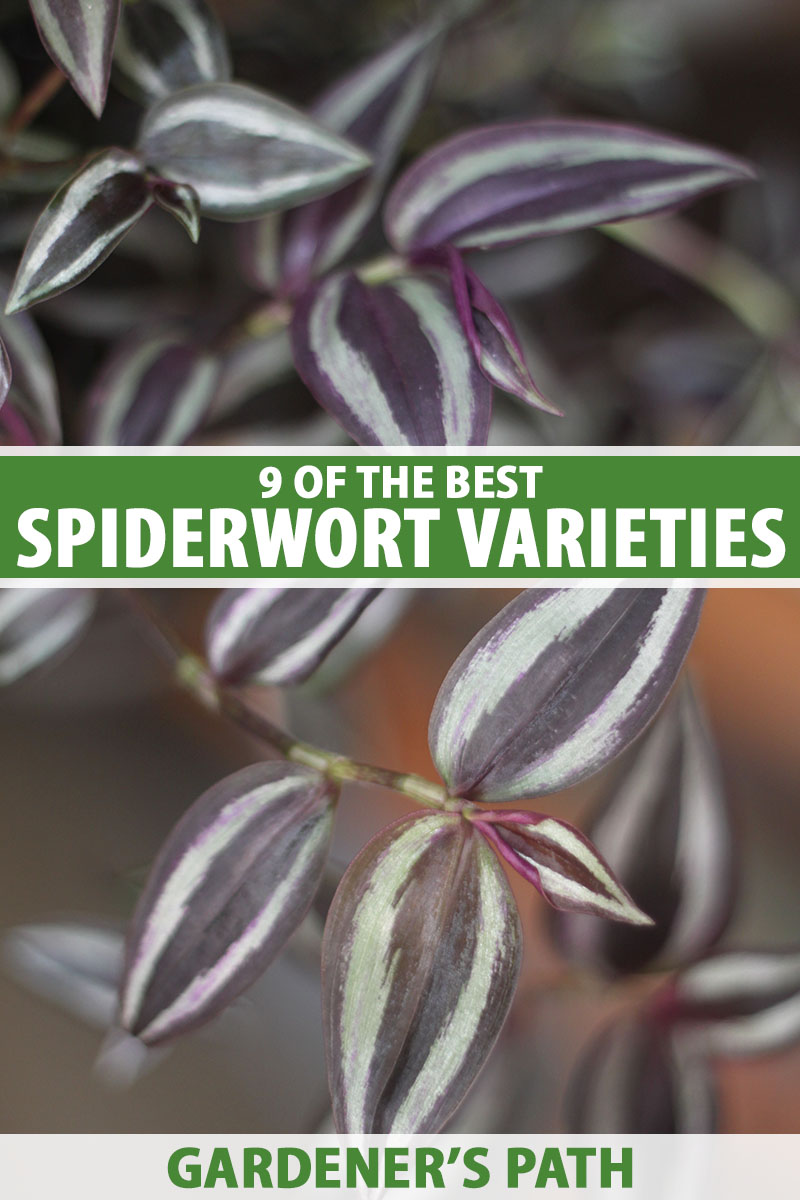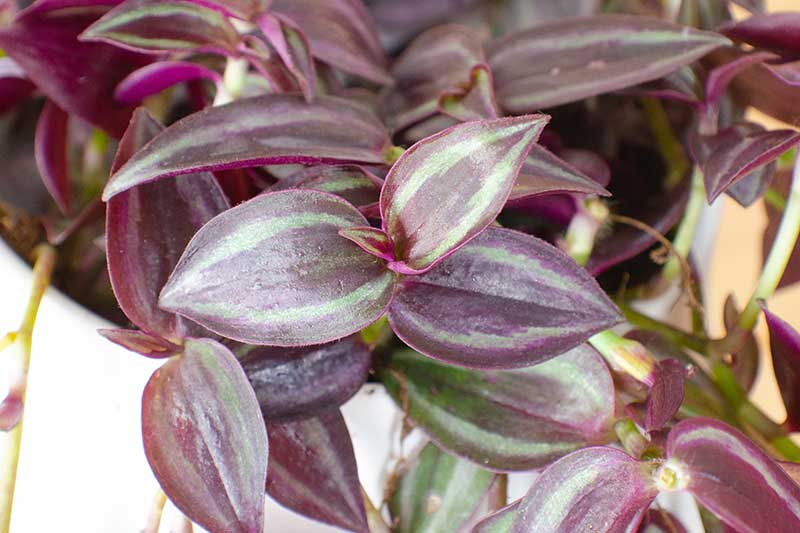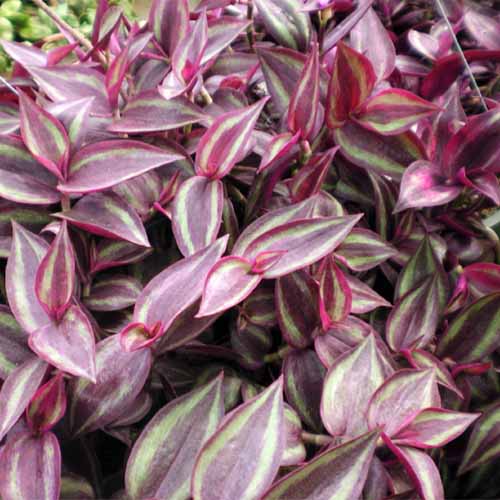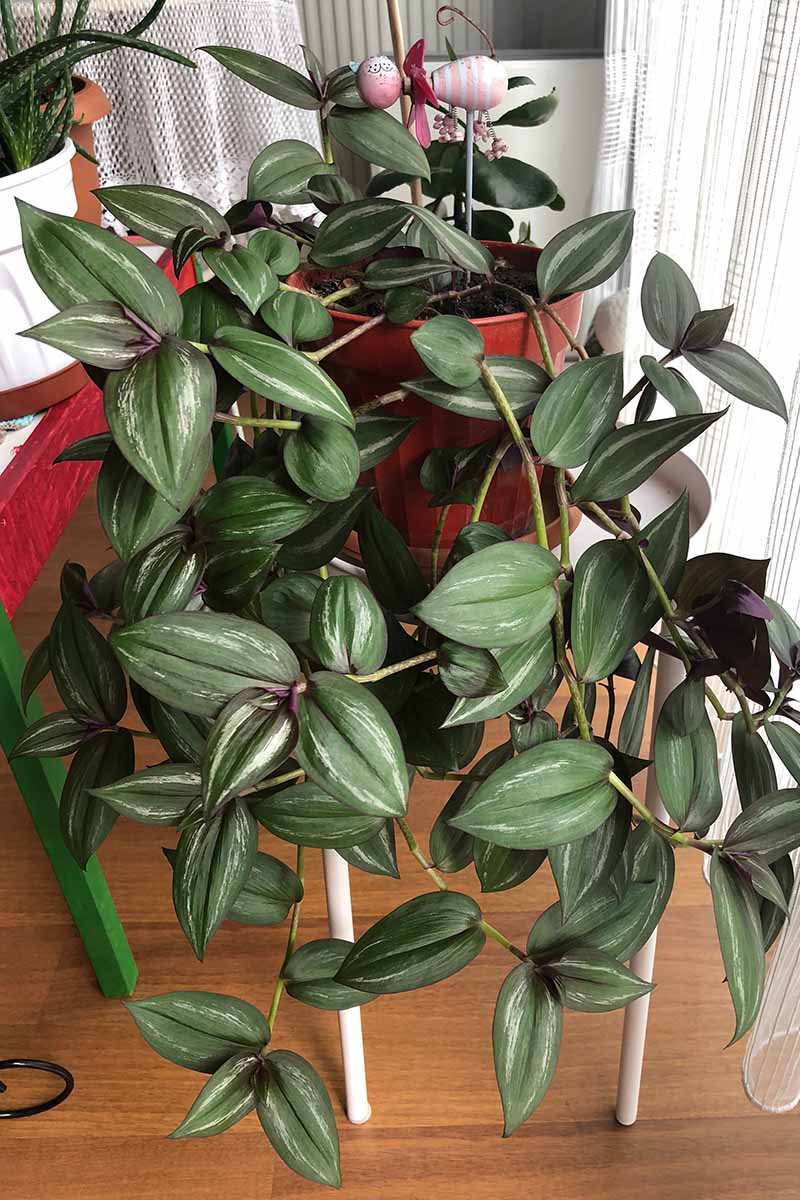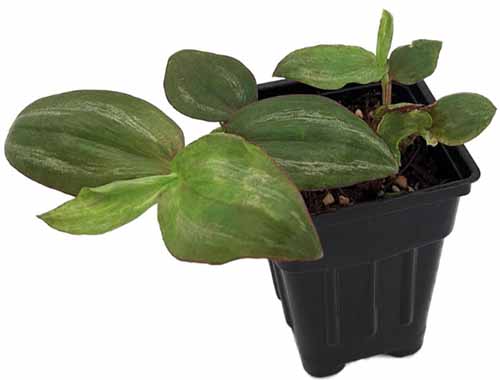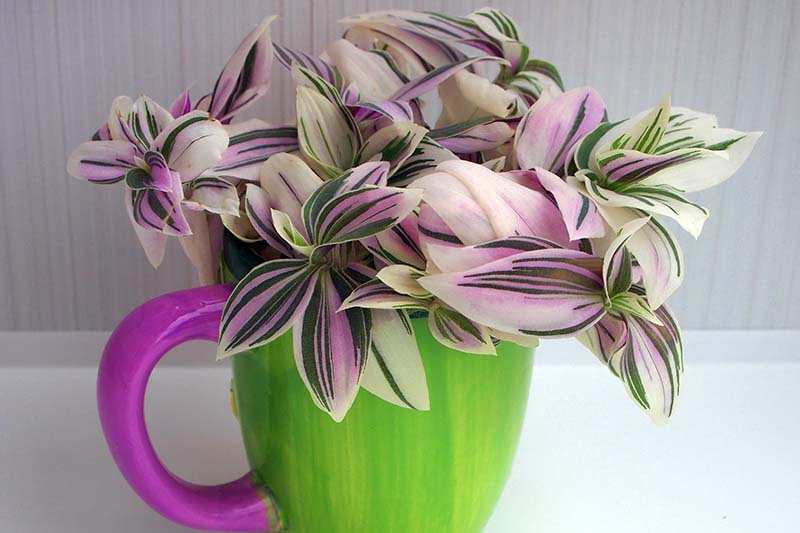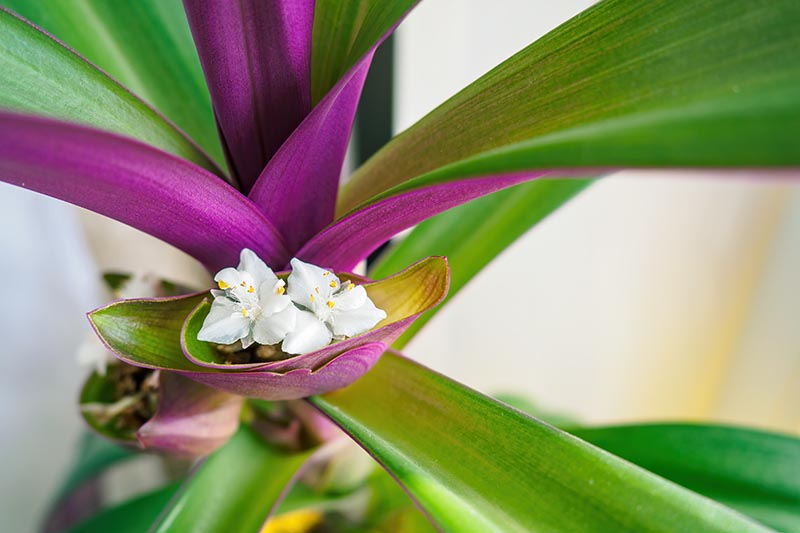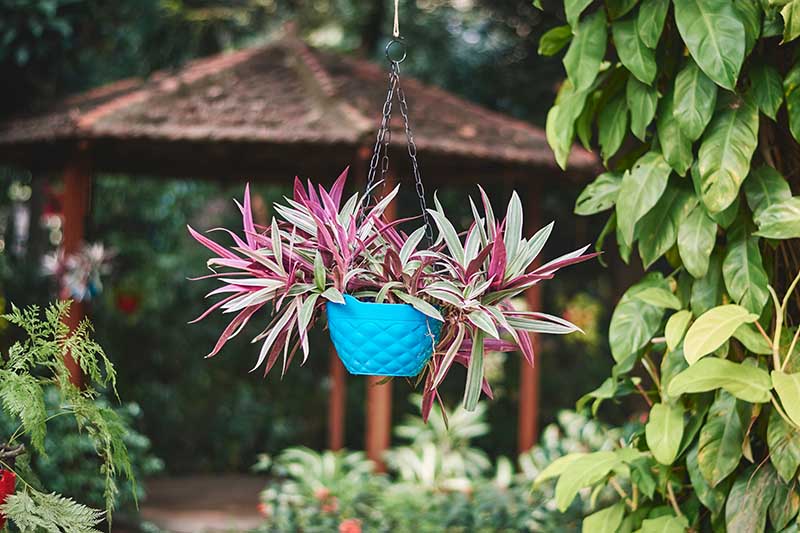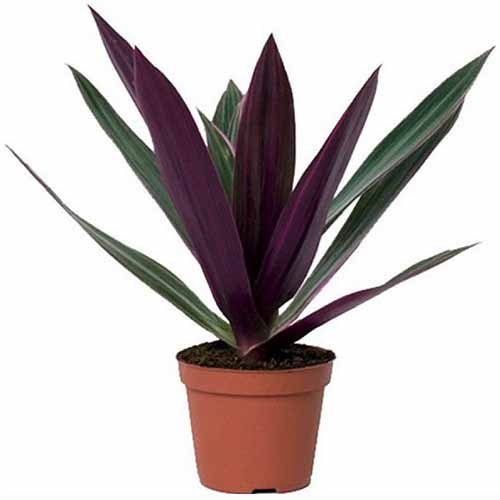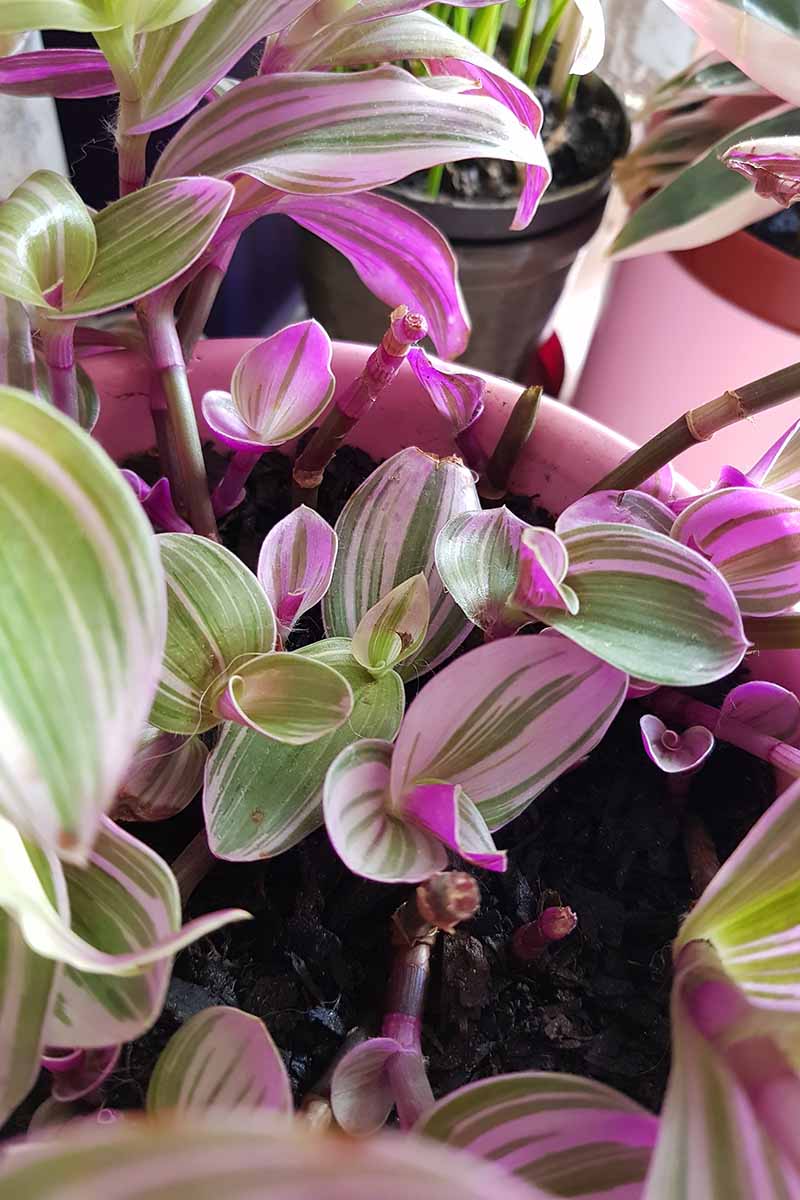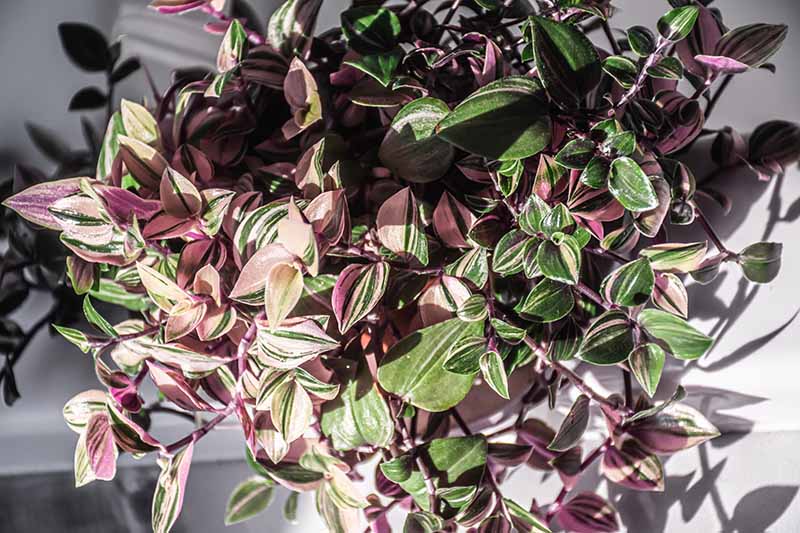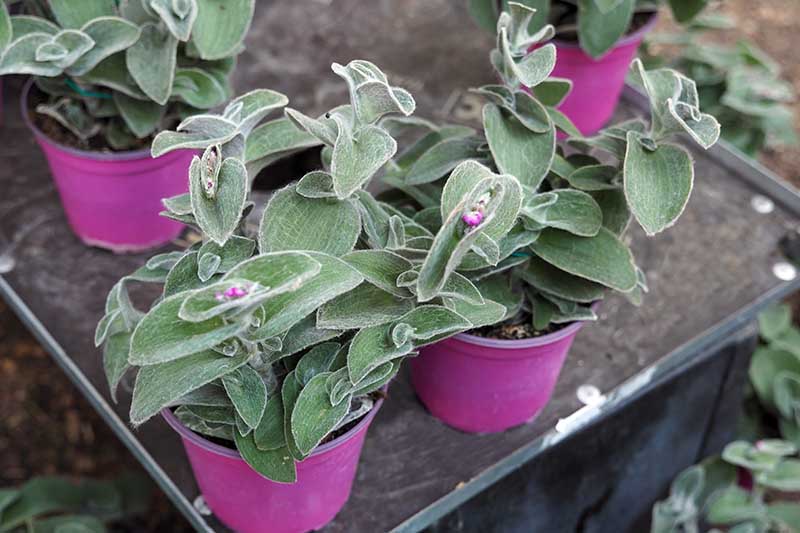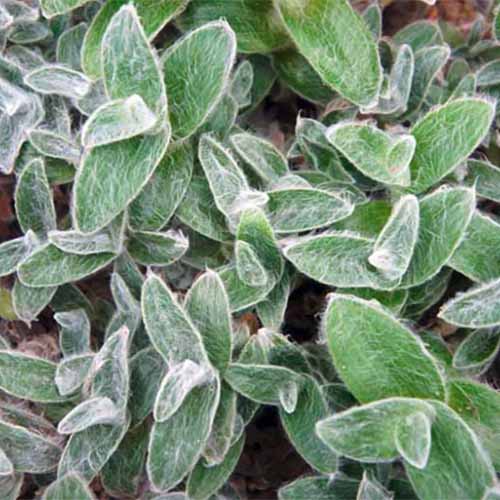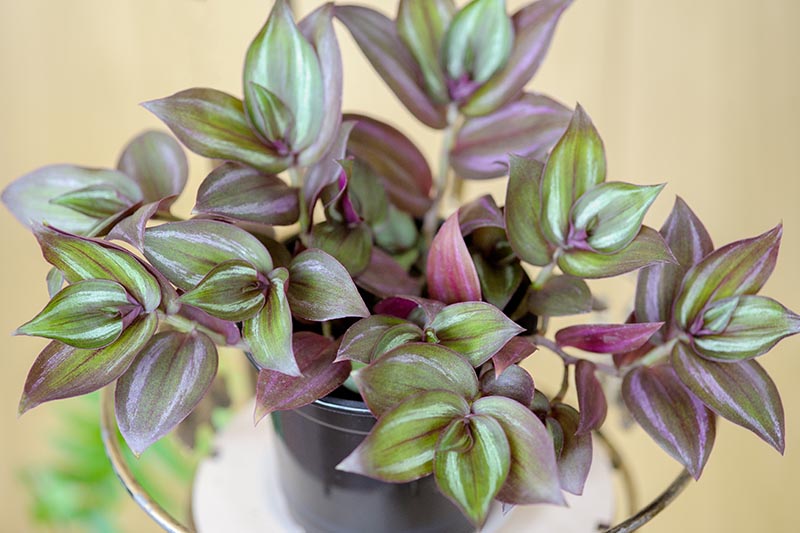They are also available in a dazzling array of unique cultivars. In our guide to growing spiderwort, we cover how to cultivate this tropical plant indoors. And in this article, we look at the diverse varieties that come in both solid and variegated foliage, and some truly lovely color combinations. We link to vendors to help you find relevant products. If you buy from one of our links, we may earn a commission.
If you enjoy plants with soft textures like lamb’s ear (Stachys byzantine), I bet you’ll be delighted by the velvety leaves of ‘Baby Bunny Bellies.’ Also known as “speedy Jenny,” ‘Baby Bunny Bellies’ has oval-shaped green leaves with purple-pink undersides – and is covered with tiny hairs, which give this cultivar its soft texture.
2. Burgundy
‘Burgundy’ is a cultivated variety of the species T. zebrina, whose species name means “striped like a zebra.” The species is also sometimes referred to by the alternate scientific names T. pendula, Zebrina pendula, or Cyanotis zebrina. In its native range, it thrives from Mexico to Colombia. The ‘Burgundy’ cultivar of T. zebrina has leaves that are a deep burgundy hue with silvery green outlines on the top sides, and purple-colored undersides. If you’re considering this for an addition to your cottage garden, it will grow outdoors as a perennial in Zones 8a-12a.
T. zebrina ‘Burgundy’ in 3-inch Pot ‘Burgundy’ is available for purchase in three-inch starter pots from Hirt’s Gardens via Walmart.
3. Green Ghost
‘Green Ghost’ is an inch plant variety that has dark green foliage imprinted with a spectral silver outline on each leaf, and purple undersides. ‘Green Ghost’ is one of the more subdued cultivars of T. zebrina.
Tradescantia ‘Green Ghost’ in 2.5-inch Pot You’ll find ‘Green Ghost’ available for purchase in two-and-a-half-inch pots from Hirt’s Gardens via Walmart.
4. Green Glow
‘Green Glow’ is a Tradescantia cultivar that has bright and cheery leaves that are medium to lime green in color.
Tradescantia ‘Green Glow’ in 2.5-inch Pot You’ll find ‘Green Glow’ available for purchase in two-and-a-half-inch starter pots from Hirt’s Gardens via Walmart.
5. Lilac
‘Lilac’ is a cultivar of the species T. fluminensis, also sometimes called T. albiflora. The species, native to Brazil and Argentina, is also known as “striped inch plant.” ‘Lilac’ has creamy leaves striped with delicate touches of green and shows a delicate lilac colored blush. When ‘Lilac’ is in flower, its tiny blooms are just as advertised, with a soft pinkish purple hue. This species is hardy as a perennial in Zones 9b-12a, but take care before planting this one outdoors – it is considered an invasive species in Australia, New Zealand, South Africa, and the southeastern United States. T. fluminensis ‘Lilac’ in 2.5-inch Pot That doesn’t mean you can’t enjoy it indoors though, no matter where you live.
6. Moses in the Cradle
While its foliage is already fairly interesting with its combination of green top sides and purple undersides, the truly fascinating part of T. spathacea is its flowers. This plant’s flowers are enclosed in bracts, giving rise to its many common names – “Moses in a basket,” “boatlily,” and “oyster plant” – in addition to “Moses in the cradle.” This species was formerly classified taxonomically as Rhoeo spathacea. While Moses in the cradle does not have a trailing growth habit like the other selections presented here, it looks beautiful as a houseplant and can still spill nicely over the edges of a hanging basket.
Although it’s hardy in Zones 9b through 11a, keep it indoors in Zones 9 and up, as it has invasive tendencies. And if you have pets or small kids at home, make sure to treat this one with a bit of caution – it is described as moderately toxic by the experts at the NC State Extension.
2-Pack Moses in a Basket in 2-inch Pots You can find a two-pack of Moses in the cradle plants in two-inch-pots for purchase from Hirt’s Gardens via Walmart.
7. Nanouk
Another variety of T. fluminensis, ‘Nanouk’ looks much like ‘Lilac’ with its thin green stripes and creamy white background, but has brighter pink accents than ‘Lilac.’ ‘Nanouk’ has foliage with bright pink undersides, and its flowers are white with a pink blush at the tips of the petals.
T. fluminensis ‘Nanouk’ in 4-inch pot It’s hardy (but, again, potentially invasive) when grown as a perennial in Zones 9b-12a. ‘Nanouk’ is available for purchase in four-inch pots from Hirt’s Gardens, via Walmart.
8. Tricolor
‘Tricolor’ is a cultivated variety of T. fluminensis, the species used to create both cultivars ‘Lilac’ and ‘Nanouk.’ ‘Tricolor’ has foliage that is an attractive mix of green, cream, and pinkish purple. Each leaf seems to have a different pattern and color combination – some leaves are nearly solid green, some mostly cream, and others have different degrees of striping and pink tints. Variegation will be the best on this colorful plant when it’s exposed to bright, indirect light.
T. fluminensis ‘Tricolor’ in 6-inch Pot ‘Tricolor’ is available for purchase in six-inch pots from Terrain.
9. White Velvet
A cultivated variety of T. sillamontana, ‘White Velvet’ is an even fuzzier spiderwort than ‘Baby Bunny Bellies.’ Also known as “white gossamer plant” and “cobweb spiderwort,” ‘White Velvet’ is covered with silvery white hairs that give the leaves a fuzzy feel and appearance. Previously classified as T. pexata, the species is native to northeastern Mexico.
T. sillamontana ‘White Velvet’ in 2.5-inch pot ‘White Velvet’ is available for purchase in two-and-a-half-inch pots from Hirt’s Gardens via Walmart.
A Fiesta of Foliage
From the soft leaves of ‘Baby Bunny Bellies’ and ‘White Velvet’ to the cradled flowers of Moses in a basket, the Tradescantia genus certainly gives us an intriguing selection of houseplants to choose from.
Which variety is your favorite? Although the species T. zebrina has a permanent place on my list of top houseplants, it’s going to have to make some room for the fascinating foliage of T. fluminensis ‘Tricolor.’ Let me know yours in the comment selection below! And if you’re looking for more houseplant inspiration, check out these articles next:
Propagating Tradescantia: How to Root Spiderwort Cuttings 23 Colorful Houseplants to Warm Up Your Home This Winter 21 of the Most Stunning Species of Prayer Plants to Grow at Home
© Ask the Experts, LLC. ALL RIGHTS RESERVED. See our TOS for more details. Product photos via Hirt’s Gardens, Kauai Garden, and Terrain. Uncredited photos: Shutterstock.
